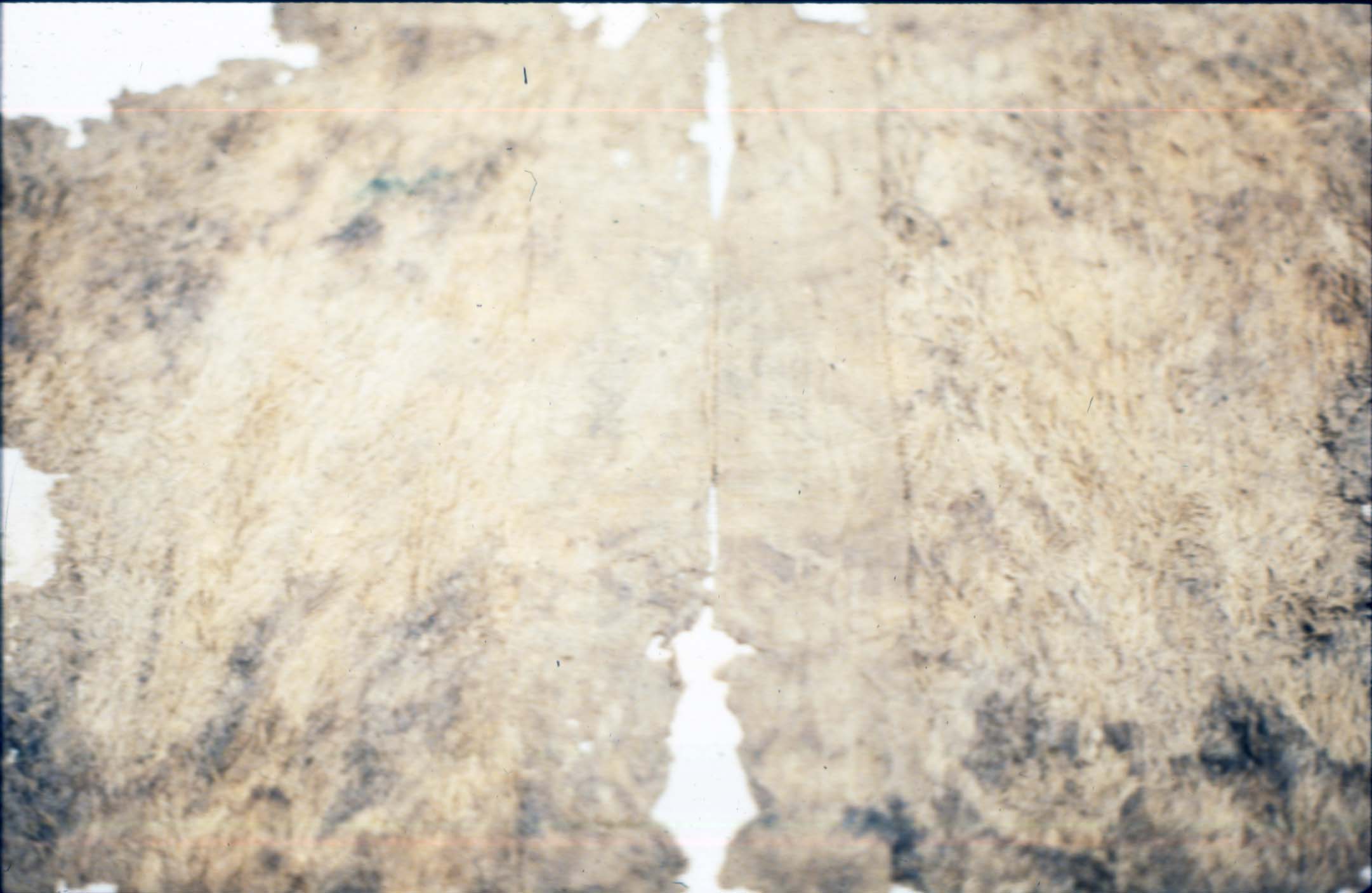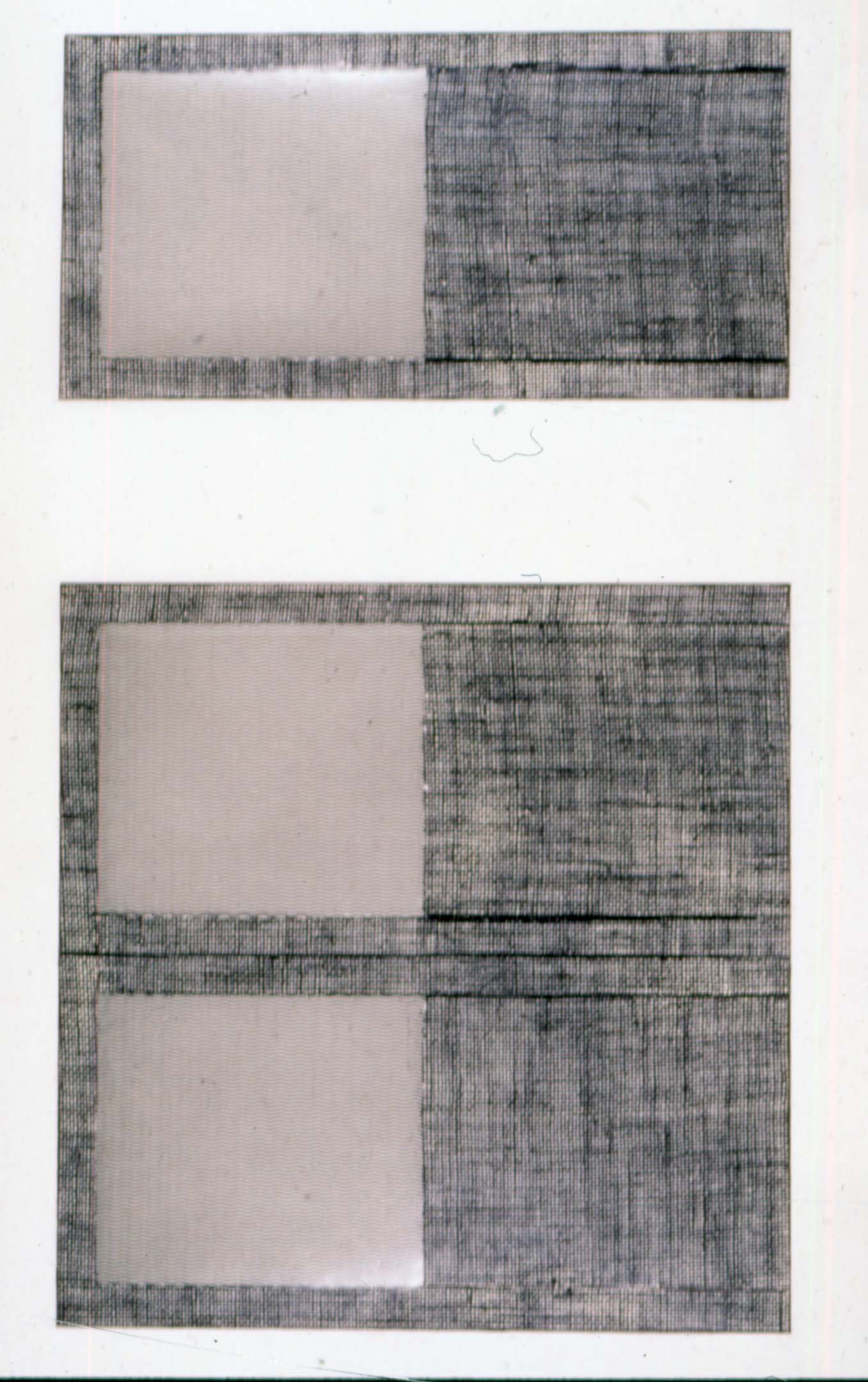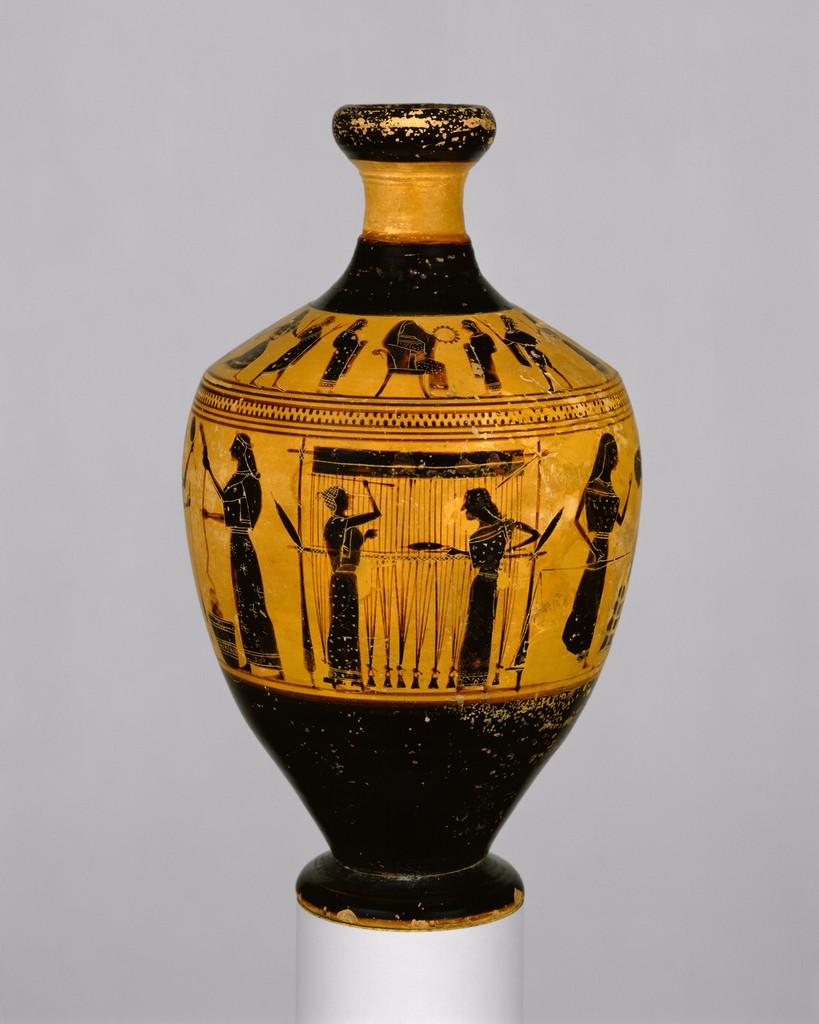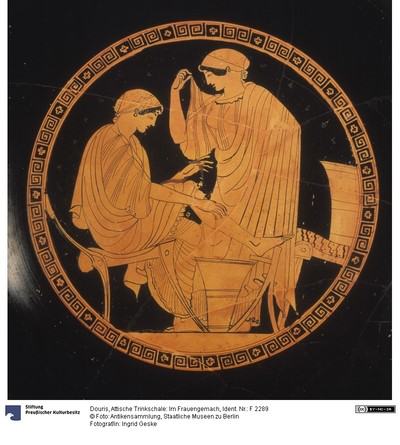The study of Greek art comprises a variety of forms; architecture, sculpture, and vase painting are the most prominent, saturating textbooks and articles with captivating images and an abundance of information. Yet, despite their necessity within Greek culture, one struggles to find comparable attention given to Greek textiles. Their exclusion from popular study can partially be attributed to the small number of high-quality textiles remaining, but also because of gender associations. Historically, art history has displayed a tendency to focus on male artists and male subjects; a 2019 study found that when examining the collections of 18 major US museums, 87% of the works are made by men (Topaz et al. 2019). However, examining textiles and other depictions of weaving provides valuable information about women of the past not available through other mediums. The study of textiles and their creators enriches the field’s understanding of women’s place within Greek art and society while combating the male-centric bias which permeates art history.
As noted, there are very few textiles that accurate conclusions can be drawn from. This is because the majority of ancient Greek textiles were created with organic materials like plant and animal fibers which quickly deteriorate (Spantidaki 2016-2017, 3). Conserving the remaining textiles has also proven to be a demanding and laborious task, further decreasing the sample size (Spantidaki 2016-2017, 4). Yet, the few textiles that have been adequately preserved have provided interesting information regarding the purpose of textiles in Greek society. One of the best-preserved textiles was discovered by Hugh Sackett at Lefkandi (Fig. 1). This highly decorated textile was found inside a small vessel with ashes, indicating that it likely served a funerary purpose, and was identified as a clothing ensemble (“The Lefkandi Textile Study Program”). Other more plain textiles were appreciated for their versatility; common functions included decorative hangings, furniture coverings, tunics, and cloaks. These textiles were simple rectangles made on an upright loom, usually made by servants or slaves (Hooper 1911, 277). The remains of such are likely pictured in another one of Sackett’s images (Fig. 2); he also provides a close-up, in which one can better view the weaving technique (Fig. 3). By examining these remaining works, one gains a clearer understanding of the diverse quality and functionality of Greek textiles.



Considering the origin of these textiles, there is substantial evidence to accredit the work to women. This claim is based on archeological excavations of loom weights in households, paintings on vases, and records of dedications for clothing (Foxhall 2016). Scholars acknowledge that male weavers existed as the exception; they were likely slaves, as traditional gender roles labeled weaving as a feminine task (Jenkins 1985, 114). Girls were taught the foundations of weaving as early as age five, learning through years of apprenticeships and practice within the household (Foxhall 2016). Additionally, because weaving on a loom required great strength, several hands, and synchronized movement, weaving became a social activity for women. This dynamic is depicted in the Terracotta Lekythos by the Amasis Painter, which includes imagery of two standing women working an upright loom surrounded by other women spinning wool (Fig. 4). Such domestic scenes on vases were common in subject matter and represented women as essential to society (Bundrick 2008, 286). A work by the artist Douris features a similar scene, this time with two women spinning wool into thread (Fig. 5). Groups of weavers like the one depicted were composed of a variety of backgrounds; slaves, female relatives, and women visiting the home were all possible contributors. Weaving thus provided an opportunity for Greek women, who were otherwise encouraged to remain in their quarters, to converse and build friendships (Foxhall 2016).


Beyond having utilitarian and social purposes, weaving was one of the few opportunities for women to produce wealth. However, because women were mainly limited to the home, they relied on middlemen to buy out surplus textiles and resell them (Foxhall 2016). This complicated three-way transaction created ambiguity within historical records, leading to the underrecognition of women’s direct contribution to the Greek economy. The types of textiles being sold varied; some of the most common products were small bands, pictured in one of Sackett’s images (Fig. 6). These strips had a multitude of functions, including headbands and grave ties, and could be woven without the use of an upright loom. Because of this, creating pieces such as the one pictured became attractive to destitute women who did not have the social support necessary to weave in groups (Foxhall 2016). The significance of textiles as a means of economic advancement, therefore, cannot be understated. Still, it is important to note the limitations; although there is evidence that women were able to create textiles as a profession, it was not a means to complete financial liberation (Brock 1994, 338).
It is possible that some women supplemented their revenue from textile sales with that of prostitution. While the extent to which weaving and prostitution overlapped is debated, it has been proposed that weaving was a common activity within brothels. Evidence for this occurrence rests in the Attic Manumissions, a set of fragmented texts in which some scholars argue that many women self-identified as “wool-weavers” to avoid moral scrutiny (Wrenhaven 2009, 369). Certain interpretations of pottery images have also been cited as evidence (Fischer 2013, 223). Regardless of the reality, these conversations display the diversity of backgrounds from which textiles were produced and further uncover the lives of ancient Greek women.
The conclusions that can be drawn from the few remaining textiles and accompanying texts provide a considerable amount of information regarding the women who made them. Even so, it is necessary to analyze the implications of having so few textile artifacts. The lack of quality textiles from the past has essentially led to the erasure of many women from the study of Greek art. As described, these women lived rich and distinct lives, ones integral to the functioning of Greek society and the trajectory of future textiles. Although museums can’t display their work because of the way that textiles deteriorate, ancient Greek female artists still deserve recognition and greater acknowledgment by art historians and institutions. As viewers, it is crucial for us to recognize that the absence of women like Greek weavers from this field is systematic. To combat this phenomenon, we can make individual efforts to educate ourselves on who is not being represented, starting with lending our attention to textiles and the women who made them.
Bella Kieklak '25